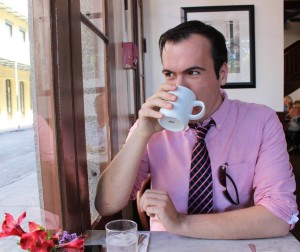On the evening of Aug. 25, multiple students and faculty members across Case Western Reserve University checked their email inbox only to find an alarming and unexpected message from University President Barbara R. Snyder. The communiqué addressed the afternoon accident of a CWRU student who “was struck by a vehicle while he was bicycling within the crosswalk on Adelbert Road.”
On this single day the University reported one accident and two close calls involving motorists and pedestrians. Unfortunately, this single accident signifies a larger issue of construction and congestion that affects every person attempting to reach the main quad of the CWRU campus.
One overwhelming benefit of inhabiting University Circle remains the constant aura of improvement and renovation, which leads to the underlying detraction of frequent construction. In 2008, University Hospitals launched their $326 million construction project and currently developer MRN Ltd. Plans to build two apartment buildings near Euclid Avenue. The Cleveland Institute of Art also continues to work on their campus modernization and unification project while the Museum of Contemporary Art Cleveland hopes to build its new home at Mayfield Road and Euclid Avenue.
The concept of University Circle construction may seem unrelated to one’s daily walk to class; however, University Circle Police Officer Mark Chavis reports that motorists are definitely more hostile and aggressive given the recent construction. “Don’t underestimate the vehicles,” he said. Officer Mark, who has directed traffic at the Euclid and Adelbert intersection for four years, advises both students and faculty to become more aware of their surroundings before proceeding into an intersection.
“Is the intersection you are crossing located near a confusing construction site or a hospital where a faint or injured person may be attempting to reach the Emergency Room?” he asks. “Don’t assume just because you have the signal to walk motorists will stop and give you the right of way,” he adds. Officer Mark’s words are not without merit. Often, vehicles will disregard the stop line and block the intersection, or rushed students will glance briefly down the road and continue to cross out of turn. When asked if he feels safe crossing into the CWRU quad, freshman Tyler Laseter feels that he “mostly” does. But, “there are many situations where drivers will make a right turn on red or be in a turning lane that doesn’t correspond with our signal to walk,” Laseter notes. “ When these instances occur students and motorists are left confused.”
Given this mutual confusion and blatant overcrowding of the intersection, the question of how to fix it must be pondered. One possible solution can be found in Mahoning County, which is located an hour south of Cleveland. When the Mill Creek MetroParks constructed their eleven mile paved bike trail through the county, they forced pedestrians to cross Mahoning Avenue, a four-lane roadway. In 2005, the MetroParks received enough funding to build a pedestrian bridge that could accommodate both walkers and bikers without inhibiting the flow of traffic.
Some students wonder if the same methodology applies to the Adelbert and Euclid intersection. When asked if the bridge could solve the battle between motorists and students, Officer Mark shares mixed feelings on the subject. Though he can see the benefit of the bridge, he realizes that “officers could not monitor the bridge at 3:00 a.m;” thus the bridge could be a safety and crime concern. Other options, such as widening the crossing area and lengthening the distance between the stop line and crosswalk, could prove more feasible for the time being.
At this point, only an issue of overcrowding remains readily seen for this nucleus of campus life; however, given that this is a well funded University with many able engineers at its disposal, an appropriate solution is bound to arise. At that time, students will finally be rest assured that it is, indeed, safe to cross.















